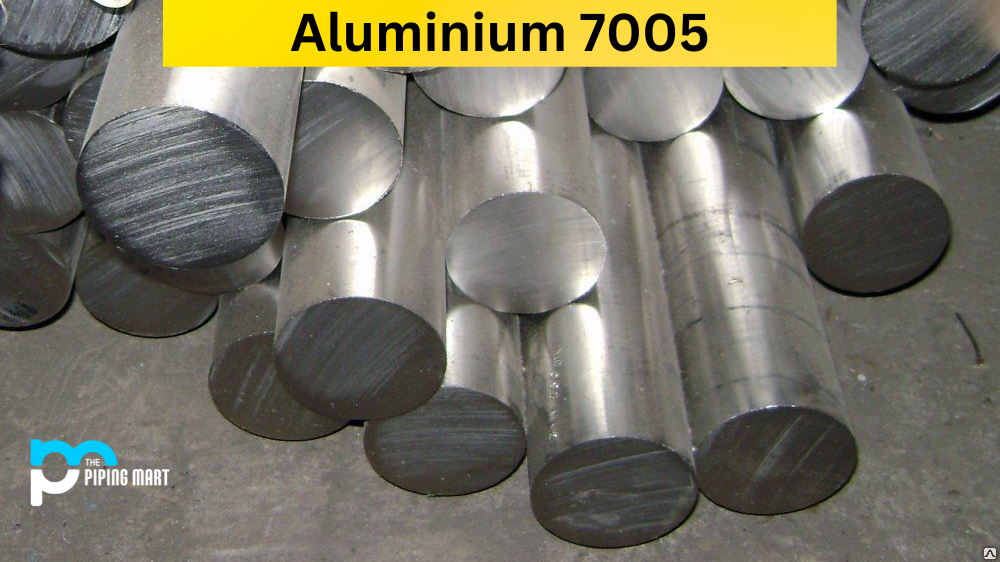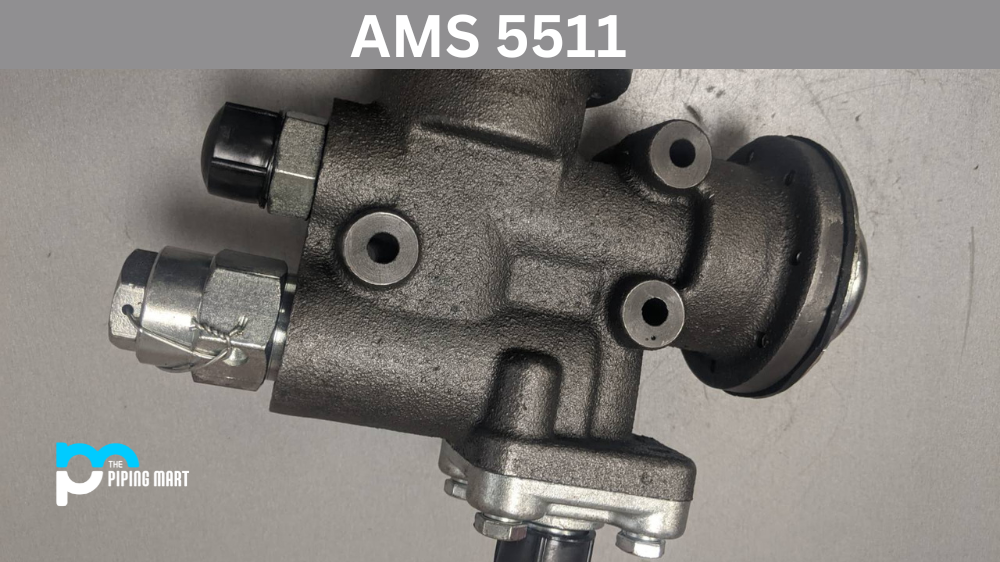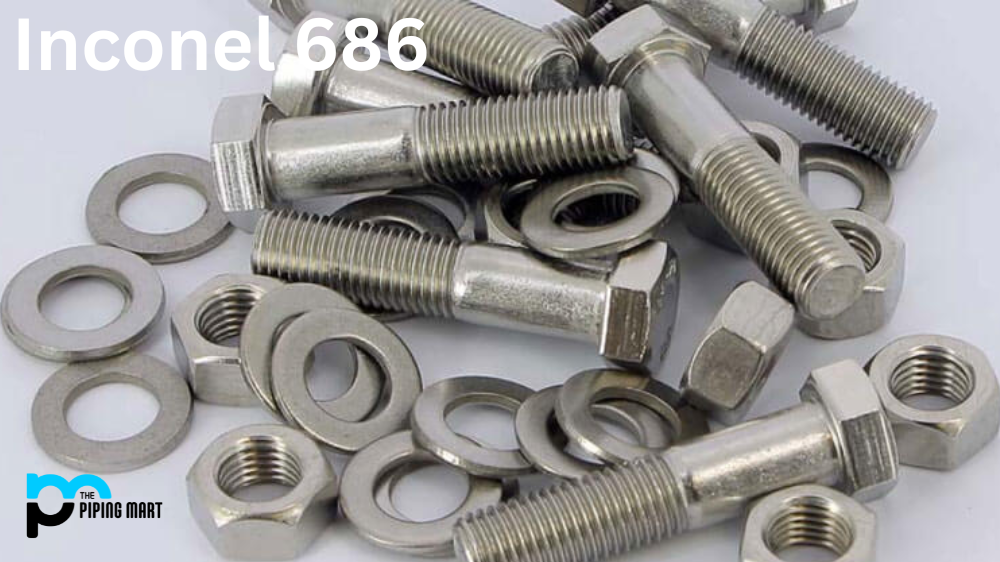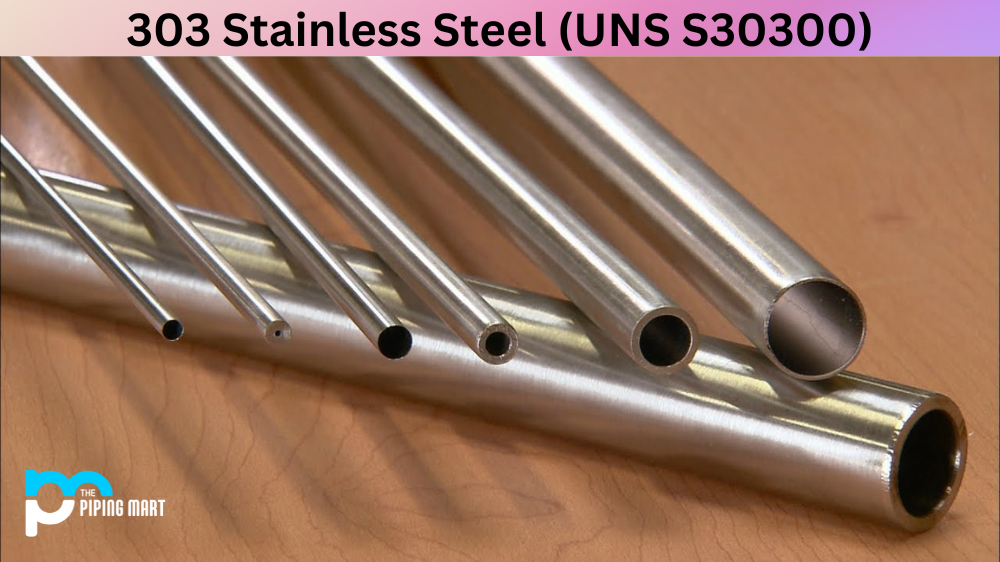Aluminium 7005 is an alloy that has many uses in the construction and engineering industries. 7005 Alloy is made up of a combination of zinc, magnesium and copper, making it lightweight yet strong. UNS A97005 has excellent corrosion resistance and good heat resistance properties, which makes it ideal for use in a wide range of applications. In this blog post, we’ll take an in-depth look at the properties of 7005 Aluminum and how it can be used in various applications.
7005 Aluminum Composition
| Element | Content (%) |
|---|---|
| Aluminum, Al | 93.3 |
| Zn | 4.5 |
| Magnesium, Mg | 1.4 |
| Manganese, Mn | 0.45 |
| Zirconium, Zr | 0.14 |
| Chromium, Cr | 0.13 |
| Titanium, Ti | 0.04 |
7005 Aluminum Physical Properties
| Properties | Metric | Imperial |
|---|---|---|
| Density | 2.6-2.8 g/cm3 | 0.0939-0.1011 lb/in³ |
7005 Aluminum Mechanical Properties
| Properties | Metric | Imperial |
|---|---|---|
| Elastic modulus | 70-80 GPa | 10152-11603 ksi |
| Poisson’s ratio | 0.33 | 0.33 |
7005 Aluminum Thermal Properties
| Properties | Conditions | ||
|---|---|---|---|
| T (ºC) | Treatment | ||
| Thermal conductivity | 166 W/mK | 25 | O |
7005 Aluminum Equivalents
- ASTM B221
7005 Aluminum Uses
Aluminium 7005 is an incredibly versatile alloy that can be used for a variety of purposes. It’s commonly found in applications such as aerospace components, automotive parts and machine frames. Its strength makes it suitable for structural components as well as components that require precise tolerances. Its lightweight nature also makes it popular in the manufacturing industry as it significantly reduces any extra weight on the finished product. Additionally, its excellent corrosion resistance means that it can be used for outdoor structures or products that are exposed to harsh elements such as salt water or chemicals.
Corrosion Resistance
One of the main advantages of aluminum 7005 is its high level of corrosion resistance. This is due to its chemical composition, which contains elements such as zinc and magnesium, which are known to be highly resistant to oxidation and other forms of corrosion caused by exposure to harsh environments. The addition of copper significantly enhances its ability to resist corrosion even further. This makes aluminium 7005 perfect for applications where they need to remain rust-free despite being exposed to extreme weather conditions or corrosive agents such as salt or acid rain.
Heat Resistance
Another benefit of aluminum 7005 is its excellent heat resistance properties which make it suitable for high-temperature applications such as gas turbines or power plants where temperatures can reach upwards of 1000°F (538°C). The alloy’s resistance to heat allows it to maintain its strength even at these temperatures, which makes it an ideal choice for critical components where reliability is paramount. It also has good thermal conductivity, so it can dissipate heat quickly when necessary without compromising on strength or durability.
Heat Treatment
Aluminium7005 can also be heat treated in order to enhance certain properties such as tensile strength, hardness or yield strength depending on the application requirements. The most common type of heat treatment used with this alloy is solution treatment followed by age hardening, which involves subjecting the material to elevated temperatures and then allowing it to cool slowly before being subjected again until the desired results are achieved. This process helps improve mechanical properties without sacrificing ductility or formability so that you get a stronger part without compromising on quality or performance.
Machining
Aluminium7005 is relatively easy to machine compared with other metals due to its low melting point and softness compared with other alloys like steel or brass. This means that you get smooth surfaces with minimal tool wear when machining parts out of this alloy, so you don’t have to worry about any burrs getting stuck on your parts during production runs. However, you should still be careful not to overheat your tools while machining since too much heat could warp your workpiece if not managed properly.
Welding
Welding aluminium70051 is fairly straightforward, but there are certain precautions that should be taken into consideration before attempting this process. Since this alloy does not respond well when exposed to oxygen, special welding techniques must be employed when welding parts made from aluminium70051 to ensure strong welds. Oxygen-free shielding gases like argon are recommended when welding this particular alloy since they help protect against oxidation during welding. Additionally, preheating prior to welding helps improve flow characteristics during welding, resulting in stronger welds once cooled down afterwards.
Conclusion:
Aluminum 7005 offers a unique combination of strength, lightweight, corrosion resistance and heat resistance, making it an ideal choice for many different types of applications ranging from aerospace components, automotive parts, machine frames, structural components, outdoor structures etc. It also requires minimal machining effort while still providing reliable performance under extreme conditions thanks to its ability to withstand both high temperatures and corrosive agents like saltwater & acid rain. Furthermore, aluminium 70051 can easily be welded using special techniques like oxygen-free shielding gases & preheating prior to welding steps, ensuring strong welds are formed once cooled down afterwards. All these factors make aluminium 70051 an attractive option for engineers & metal fabricators who want reliable parts at reasonable costs.

A passionate metal industry expert and blogger. With over 5 years of experience in the field, Palak brings a wealth of knowledge and insight to her writing. Whether discussing the latest trends in the metal industry or sharing tips, she is dedicated to helping others succeed in the metal industry.




